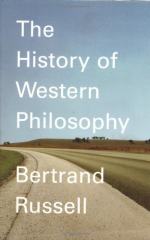|
This section contains 598 words (approx. 2 pages at 400 words per page) |

|
Book 1: Chapter 17, Plato's Cosmogony Summary and Analysis
Plato described his cosmogony in the Timaeus, the only known dialogues translated into Latin in the Middle Ages. Apart from the summary of the Republic, there is also included the myth of Atlantis that was to be larger than Asia and Libya, and the history of the world as told by Timaeus, a Pythagorean astronomer
Unchanging matters were understood by intelligence and reason while changing matters through opinion. The world created by God was temporary and made according to the eternal pattern to reflect God. He made order out of disorder from the existing sphere. This doctrine differed from the Jewish and Christian religion, where God made the world out of nothing. Such world was to be a globe like an animal that moved in the only perfect motion of circle. Plato numbered the four...
(read more from the Book 1: Chapter 17, Plato's Cosmogony Summary)
|
This section contains 598 words (approx. 2 pages at 400 words per page) |

|




